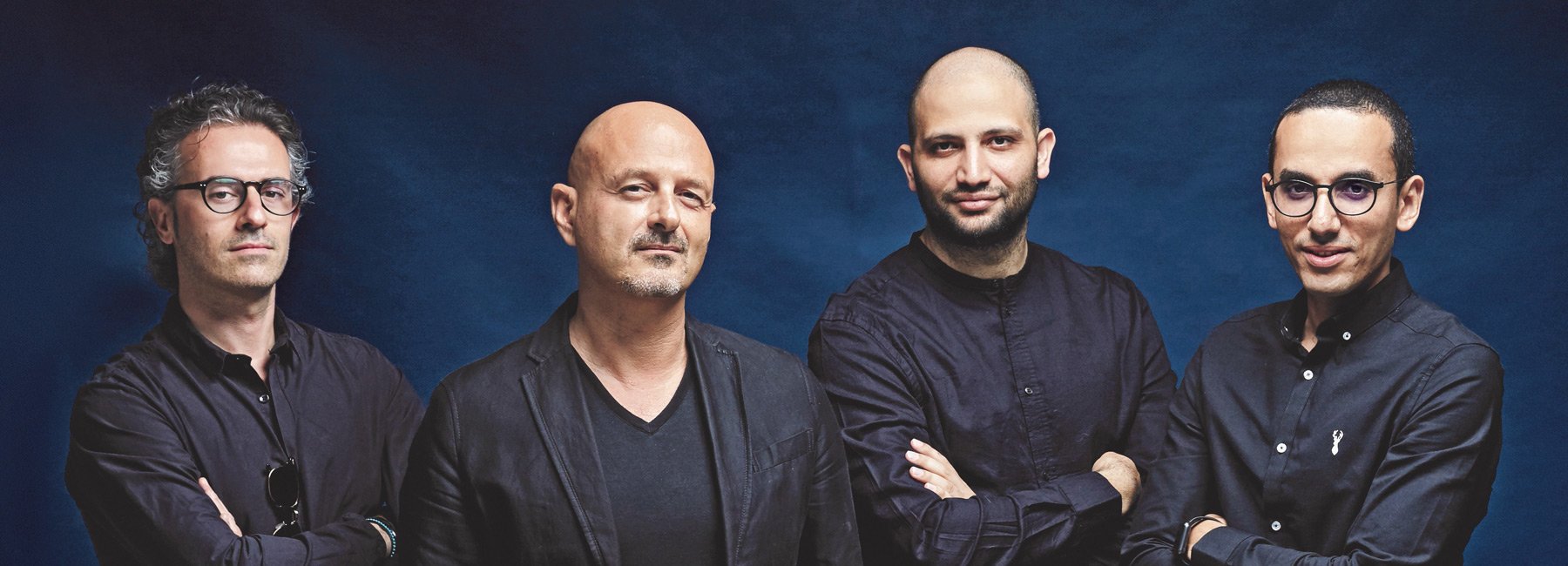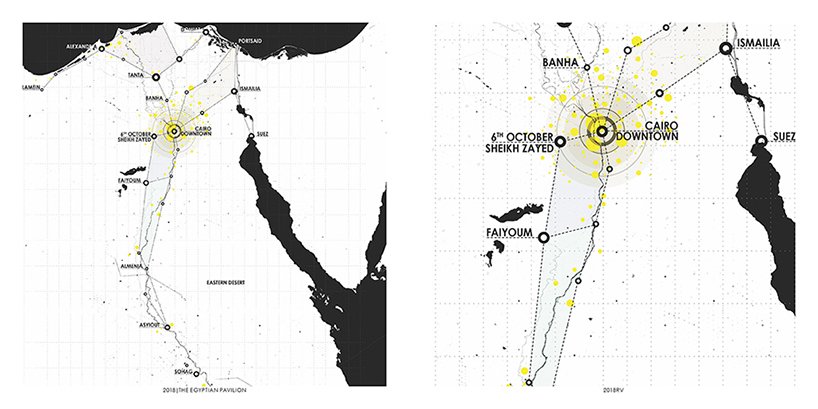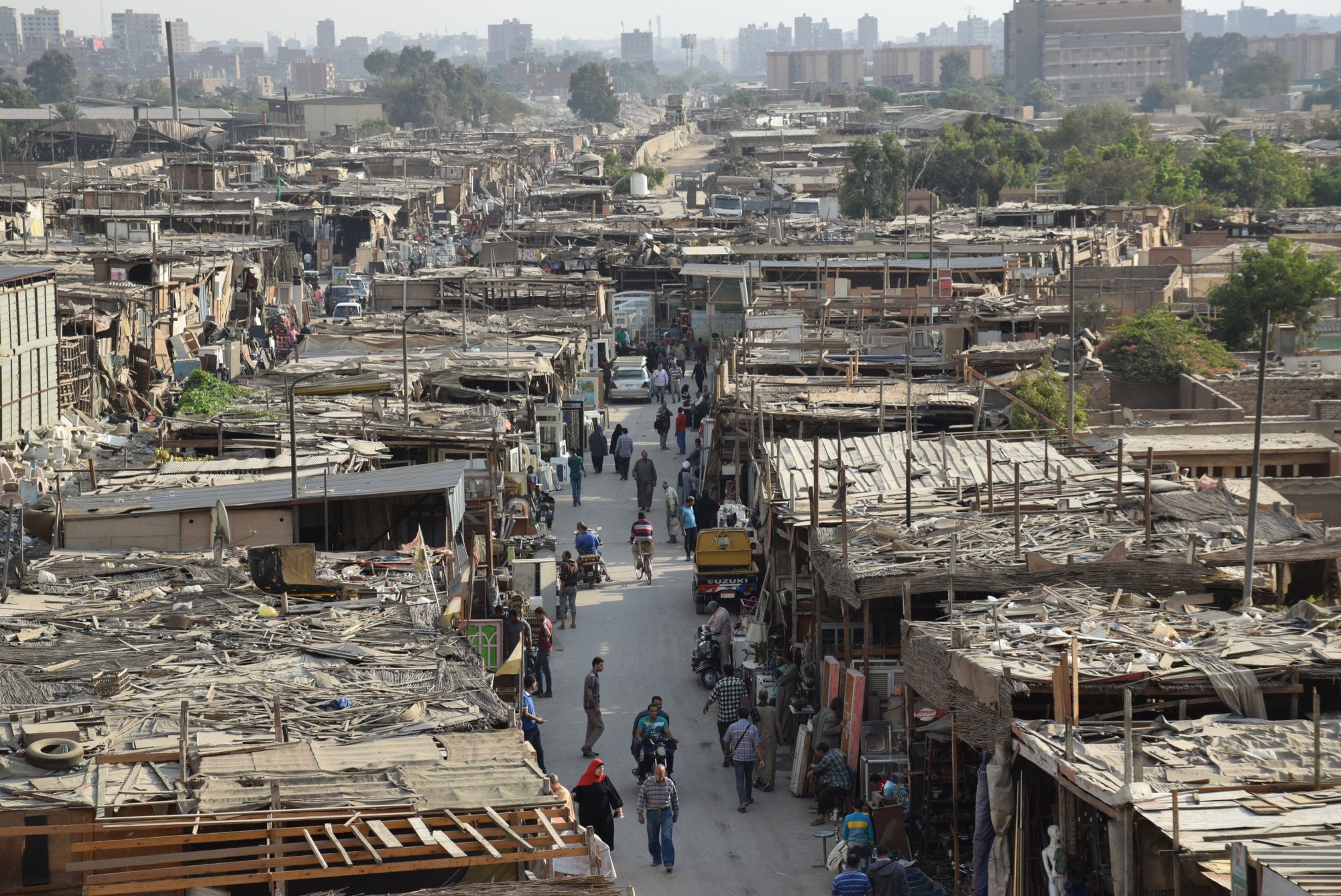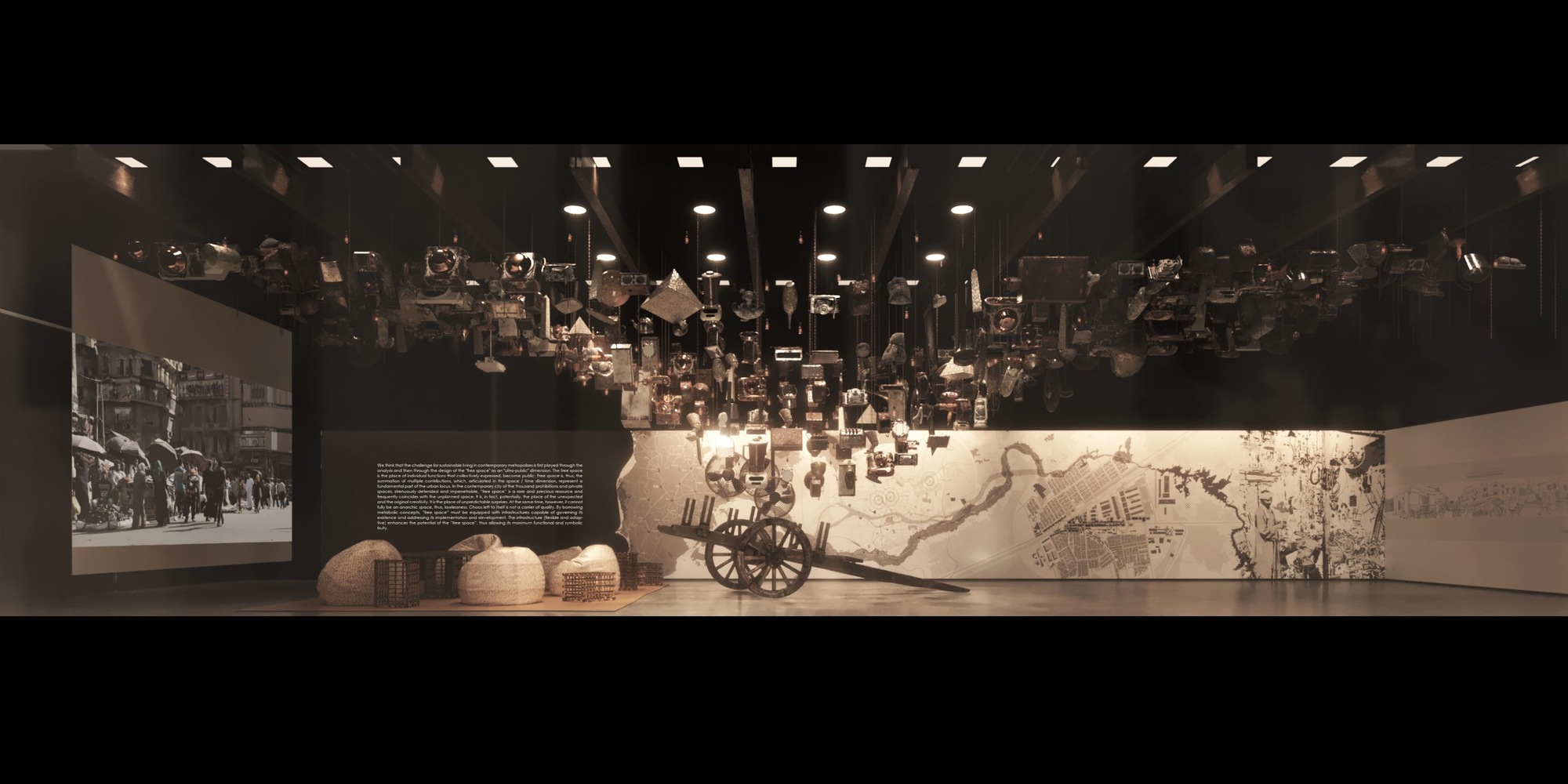The Egyptian Ministry of Culture has announced: “Roba becciah: The informal city” as the theme of the Egyptian pavilion at the 2018 Venice Architecture Biennale.
The pavilion was curated by architects Islam El Mashtooly and Mouaz Abouzaid, architecture professor Cristiano Luchetti, art director and producer Giuseppe Moscatello, and art director Karim Moussa proposes the theme of a redevelopment of spontaneous commercial spaces across the entire country. The phenomenon of “free”, unstructured, often illegal, trading is predominant in many urban and suburban areas. The traditional souk is no longer confined to narrow streets and interstitial spaces of historical areas. Indeed, the space of commerce extends its tentacles seamlessly along the lines of urban streams without any rule.

Curators of the Egyptian Pavilion
The project for the pavilion focuses on these strategic spaces but also on their content. The trading of “roba becciah” is a large portion of all market activities. Disused items produced and dismissed by consumerist societies are first collected and then stacked in areas to create mono-functional enclaves for future trading. To the curators, “roba becciah” represents an important metaphor for the anthropological-urban condition of the modern world.

Free-Markets locations in main cities in Egypt
Therefore the design of the “urban market” seeks rethinking and the role of “free space” within the dense morphological and social fabric of the city. It is a proposal that aims at the upgrading and “governance” of large urban areas allowing a “free use” that contributes to a better living of contemporary metropolises.

Souk Al Juuma, Cairo
Cities were founded because societies are better than the individuals that make them. A society needs places to operate, manifest, self-recognize, and reproduce. The city is the place of opportunity, exchange, and, therefore, of knowledge. In these few lines, one could explain the reasons for the secular phenomenon of the massive urbanization that seems to have no limits or exhausts its scope. Through its expansion, over time, the city from limited conurbation has become a region, then a whole territory. For quite some time, the historical clear separation between Urbs and Orbs, between the city and “the everything else”, has been outmoded.

Egyptian Pavilion 2018 Venice Biennale
Nowadays, through globalization and reduction of physical distances due to the digitalization of the world, the city becomes an “urban world”. Since the Industrial Age in the XIX century and consequent rapid urbanization, great visions, planning strategies, and strict zoning have slowly but inexorably demonstrated their implementation limits. In the post-modern era, the city seems to be more and more a metabolic organism.

